Complete Solutions to Illustration of chapter ALIPHATIC AND AROMATIC ALDEHYDES AND KETONES of Class 12 book with complete answers and questions
| Class 12 | CHEMISTRY |
| Chapter | ALIPHATIC AND AROMATIC ALDEHYDES AND KETONES |
| CENGAGE CHEMISTRY | Illustration |
| Number Of Questions | 25 |
| Academic Year | 2023-24 |
Give the decreasing order of boiling points of the following:
(a).(I) Butanal
(II) Butane-1-ol
(III)Diethyl ether
(IV) Pentane
(b) (I) Propan`-2`-ol
(II) Propan`-2`-one
(III) `2-`Methyl propene05:54View SolutionExplain:
a. Dipole moment of `MeCH_(2)CHO` (propanal) `(2.5 D)`
is greater than that of but`-1`-ene `(0.3D)`.
b. Enthalpy of combustion `(DeltaH_(c)^(@))` of butanal is
greater than that of butan`-2`-one.
c. Enthalpy of hydrogenation `(DeltaH_(h)^(@))` of pent`-3`-en-`2`-one (I) is lower than that of pent `-4`-en-`2`-one (II).09:50View SolutionComplete the following reactions:
a.
b.
c.
d.
e.
f.
g. View Solution
View SolutionComplete the following reactions:
 08:37View Solution
08:37View SolutionExplain:
a. Propanol on oxidation with acidic `K_(2)Cr_(2)O_(7)` can give propanal although in poor yield.
b. Acid chloride `(RCOCl)` with `R_(2)Cd` and `R_(2)CuLi` gives ketone but with Grignard reagent `(RMgX)` gives `3^(@)` alcohol.
c. `R_(2)Cd` or `R_(2)CuLi` reacts with less reactive acid chloride but not with more reactive ketones.View SolutionComplete the following reactions:
a. Alcohol (A) `overset(Reag ent)underset(B)(rarr)`
b. Alkyne (D) `overset(Reag ent)underset(E)(rarr)` Product(C)
c. Acid chloride (F) `overset(Reag ent)underset(G)(rarr)`Product(C)
d. Acid(H) `overset(Reag ent)underset(I)(rarr)`Product (C)
e. Nitro compound (J) `overset(Reag ent)underset(K)(rarr)` Product(C)
f. Alkyl nitrile (L) `overset(Reag ent)underset(M)(rarr)` Product(C)View SolutionGive the products of the following on dry distillation.
a.
Barium propanoate `+` Barium acetate
c. Barium benzoate `+` Barium formate10:44View SolutionComplete the following reactions:
a.
b.
c.
d.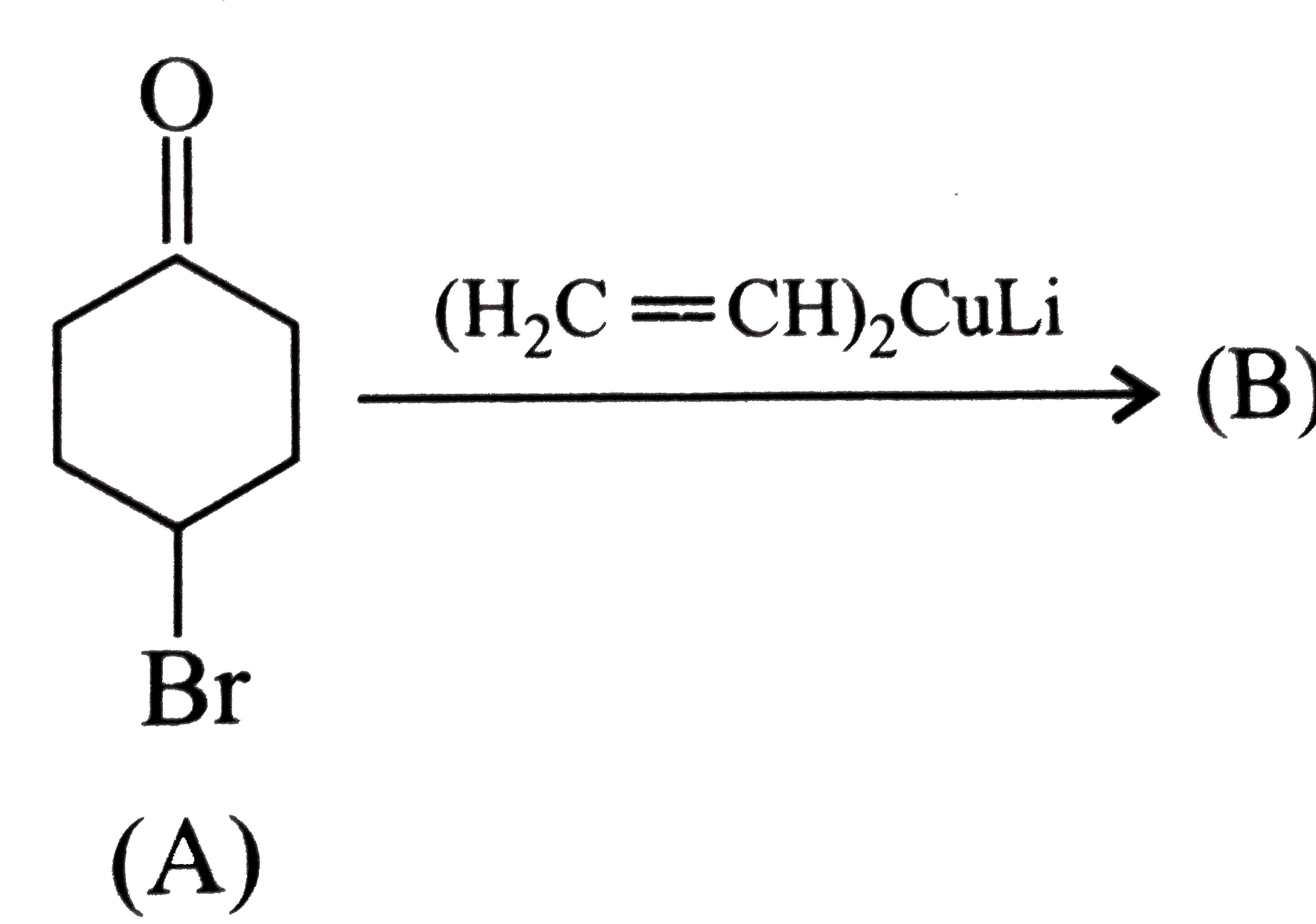
e.
f.
g.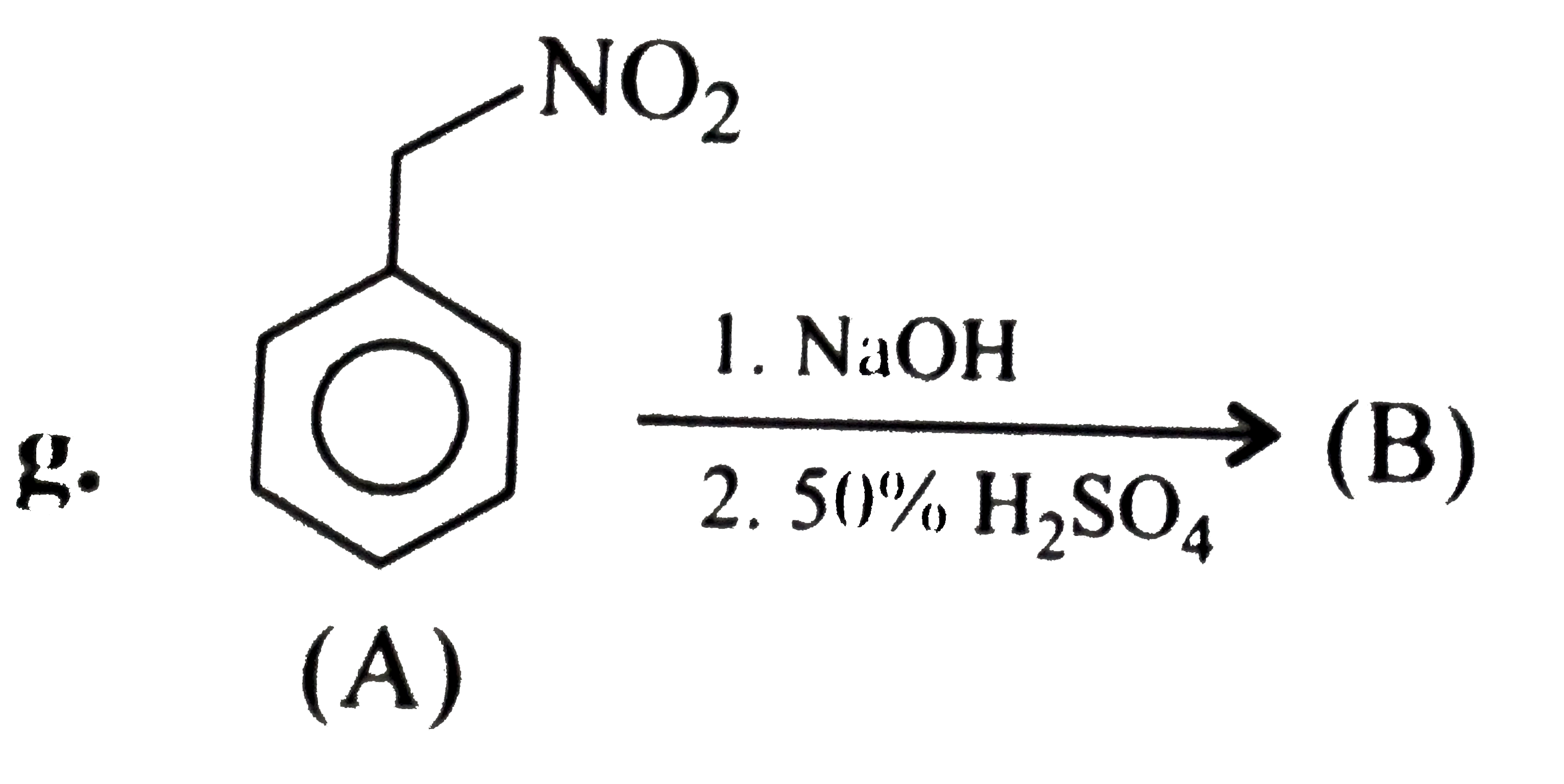
h.
i.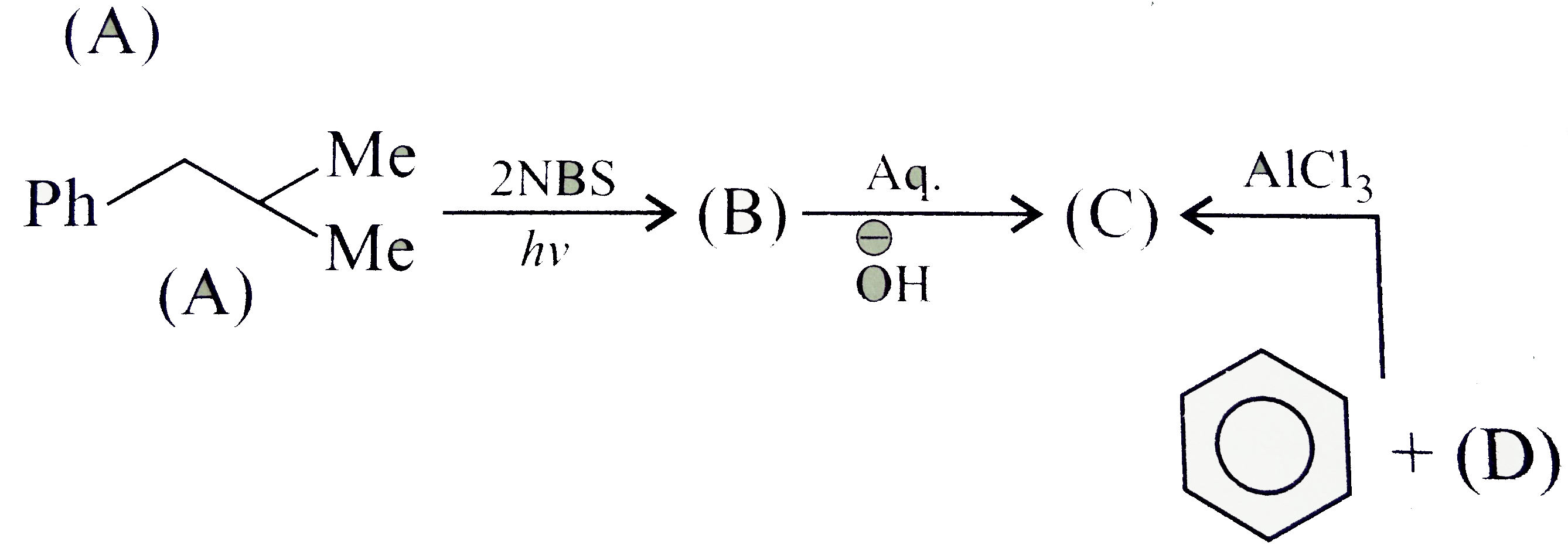 View Solution
View Solutiona. Acid halides, anhydrides, esters and amides, all of them contain `(C=O)` group but none of them gives test for `(C=O)` group, i.e., they do not form oximes, hydrazones, and DNP derivatives, etc. Why?
b. Arrange the following in the decreasing order of nucleophilic addition.
i. `(1) -CHO`
`(2) -COCH_(3)`
`(3) -COOH`
`(4) -COCI`
`(5) -CONH_(2)`
`(6)-COOCH_(3)`
`(7)-COO^(Θ)`
ii. `(1) CH_(3)CHO`
`(2) CH_(3)COCH_(3)`
`(3) HCHO`
`(4)CH_(2)H_(5)CH_(2)COCH_(3)`
iii. `(1) CH_(3)COCH_(3)`
`(2)C_(6)H_(5)COCH_(3)`
`(3) C_(6)H_(5)COC_(6)H_(5)`
`(4) C_(6)H_(5)CH_(2)COCH_(3)`
iv. `(1)C_(6)H_(5)CHO`
`(2) rho-CH_(3).C_(6)H_(4).CHO`
`(3)rho-OH.C_(6)H_(4).CHO`
`(4) rho-NO_(2).C_(6)H_(4).CHO`
`(5) rho-CI.C_(6)H_(4).CHO`
v. `(1) HCHO`
`(2) CH_(3)CHO`
`(3) CH_(3)COCH_(3)`
`(4) CI_(3)C CHO`
c. Arrange the following in the increasing order of ease of hydrolysis.
`(1)C CH_(3)COOC_(2)H_(5)`
`(2) CH_(3)COCI`
`(3) (CH_(3)CO)_(2)O`
`(4) CH_(3)CONH_(2)`
d. Arrange the following in the increasing order of ease of acid-catalysed esterification of:
i.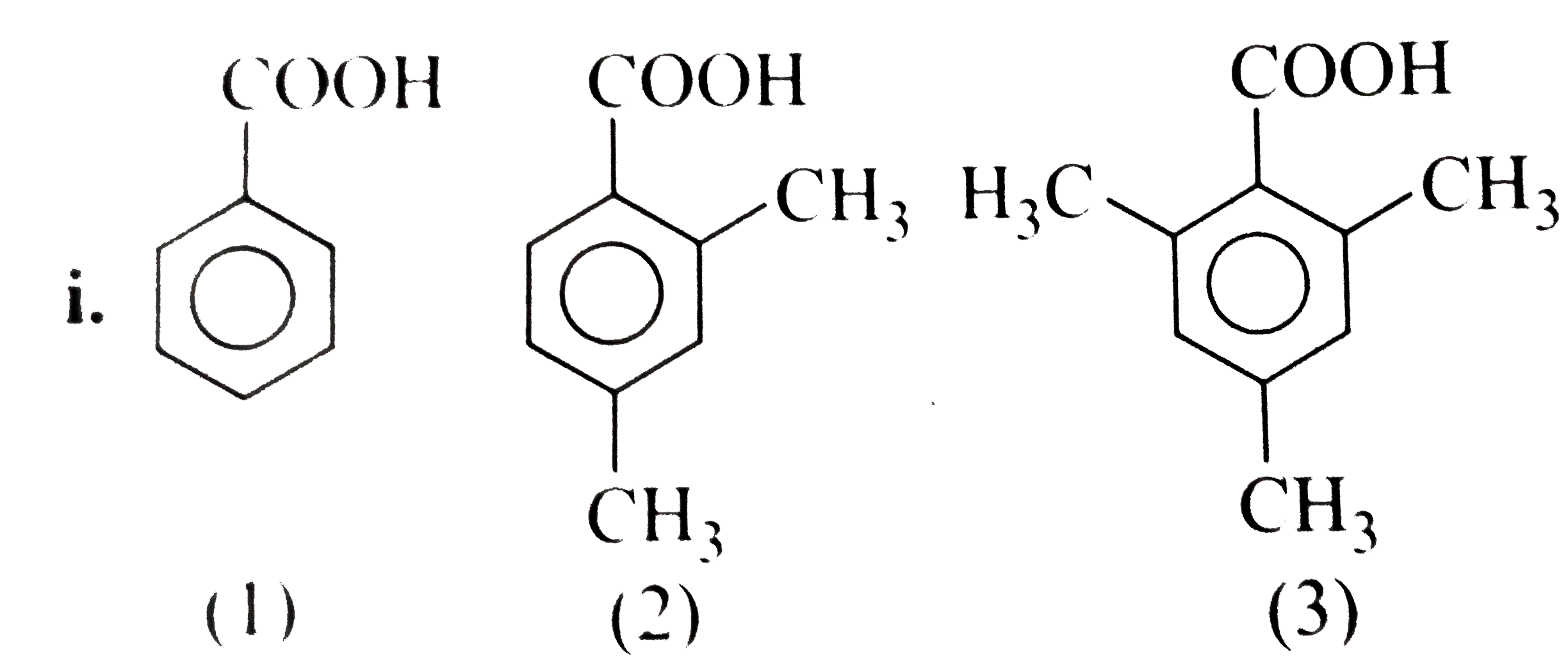
ii. `(1) CH_(3)CH_(2)COOH`
`(2) (CH_(3))_(2)CHCOOH`
`(3) (CH_(3))_(3)C COOH`
iii. `(1) CH_(3)CH_(2)CH_(2)OH`
`(2) CH_(3)CHOHC_(2)H_(5)`
`(3) (CH_(3))_(2)C(OH)C_(2)H_(5)`
e. Arrange the following esters in decresing order of ease of alkaline hydrolysis.
i. `(1) HCOOCH_(3)`
`(2) CH_(3)COOCH_(3)`
`(3) (CH_(3))_(3)C COOCH_(3)`
`(4) (CH_(3))_(2)CHCOOCH_(3)`
ii. `(1) CH_(3)COOCH_(3)`
`(2) CH_(3)COOC(CH_(3))_(3)`
`(3) CH_(3)COOCH(CH_(3))_(2)`
`(4) CH_(3)COOCH_(2)CH_(3)`
iii. `(1) C_(6)H_(5)COOCH_(3)`
`(2) rho-CH_(3)O-C_(6)H_(4)-C COOCH_(3)`
`(3) rho-NO_(2)-C_(6)H_(4)-COOCH_(3)`
`(4) rho-Cl-C_(6)H_(4)-COOCH_(3)`View Solutiona.

b.
c. Acetone on reaction with `NH_(2)OH` gives one compound, whereas acetaldehyde gives two compounds that can be separated. Why?
d. Acetone on reaction with HCN gives one compound, whereas acetaldehyde gives two compounds that are difficult to separate. Why?
e. Butan`-2`-one gives sodium bisulphite addition product, whereas pentan`-3`-one does not. Why? (Test to differentiate Butan`-2`-one and pentan`-3`-one)
f.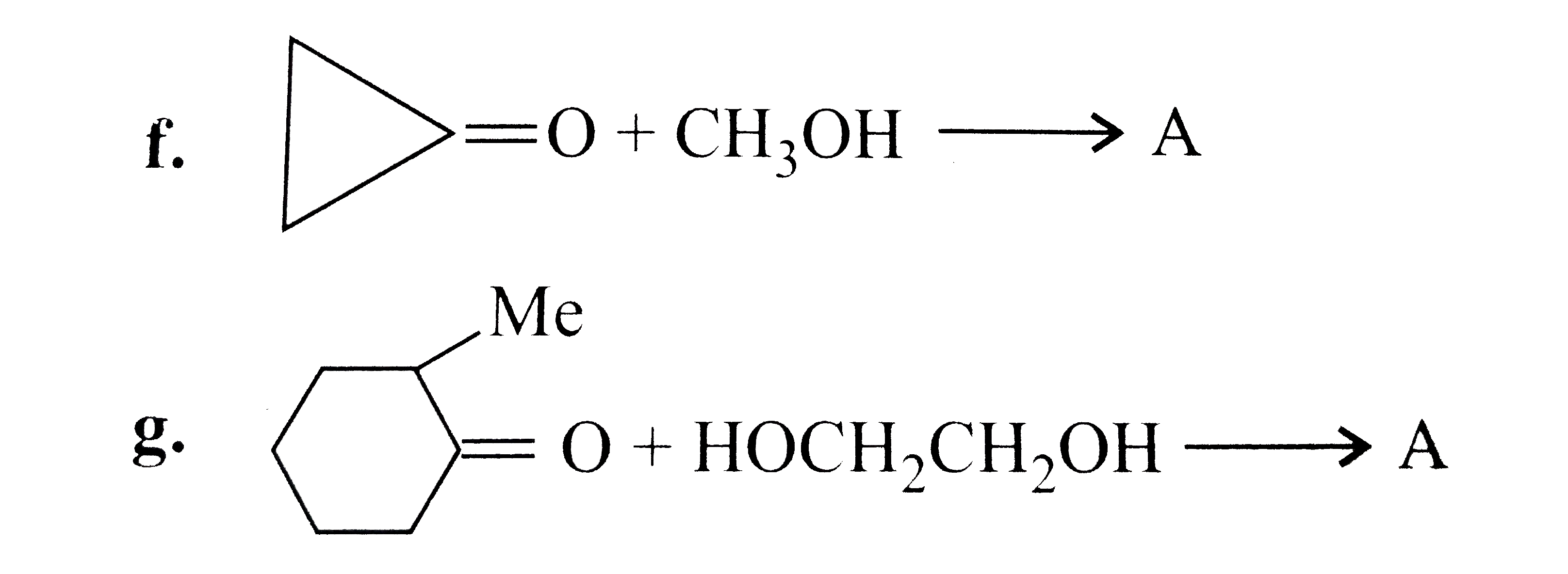
h. There are two `(-NH_(2))` groups in semicarbazide, of them which group reacts with `(C=O)` group and why?View SolutionExplain:
a. Chloral normally exists as chloral hydrate and is used as a hypnotic drug.
b. Ninhydrin, used as a spray reagent for the detection of amino acids, exists as hydrate. Which `(C=O)` is hydrated?
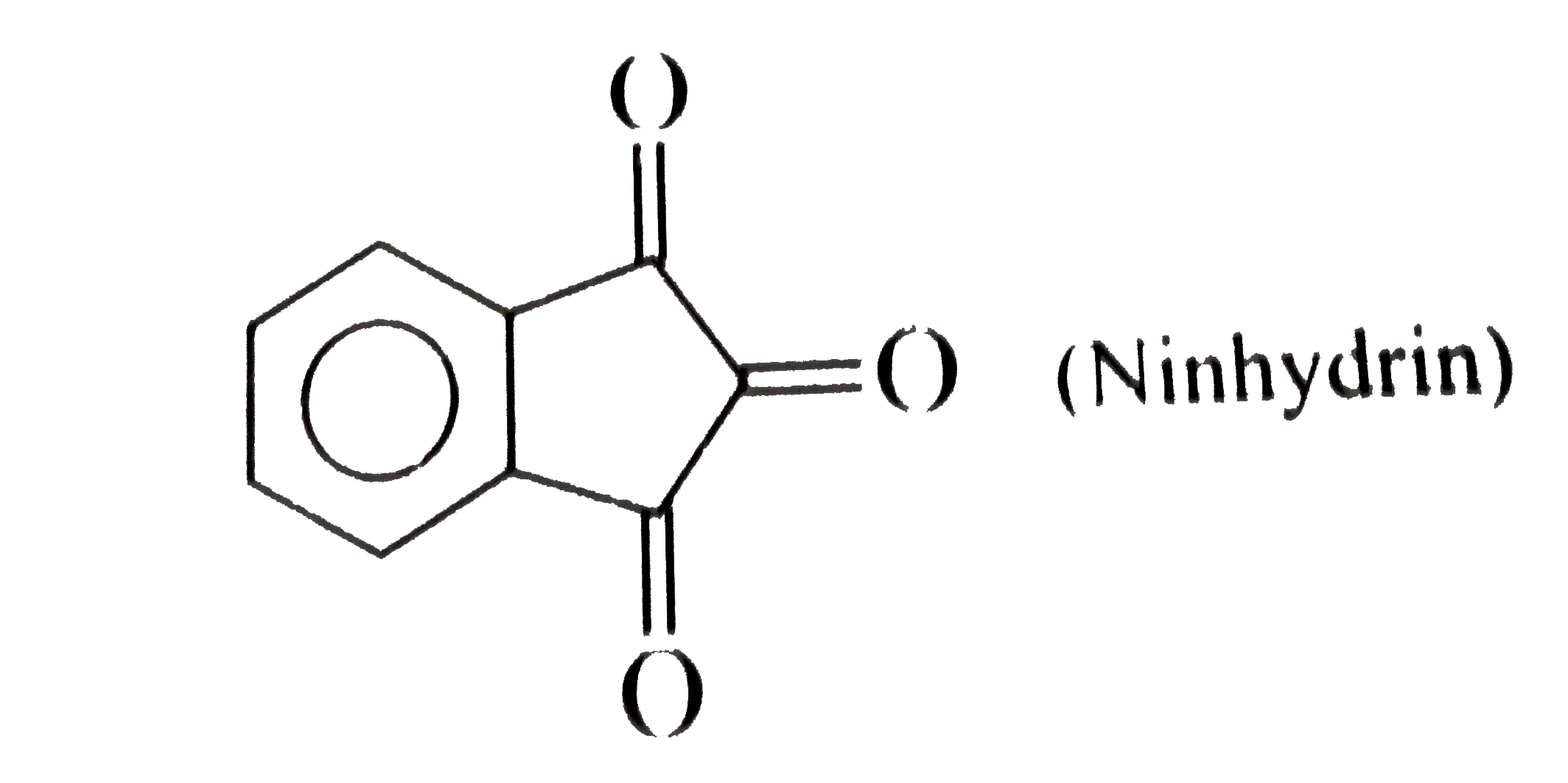
c. Account for the isolation of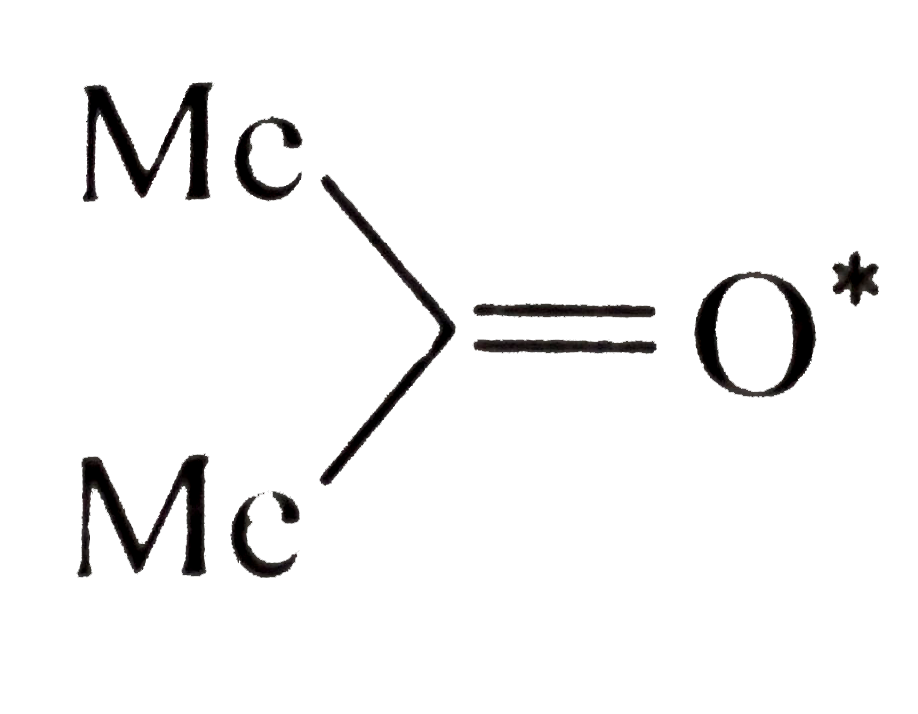 from the reaction of
from the reaction of
 with `H_(2)O^(**)` (`O^(**)` represents `O^(18)`, isotope of `O^(16)`.)
with `H_(2)O^(**)` (`O^(**)` represents `O^(18)`, isotope of `O^(16)`.)
 09:05View Solution
09:05View SolutionExplain:
a. Oxime are more acidic than hydroxylamine.
b. when 1 mol of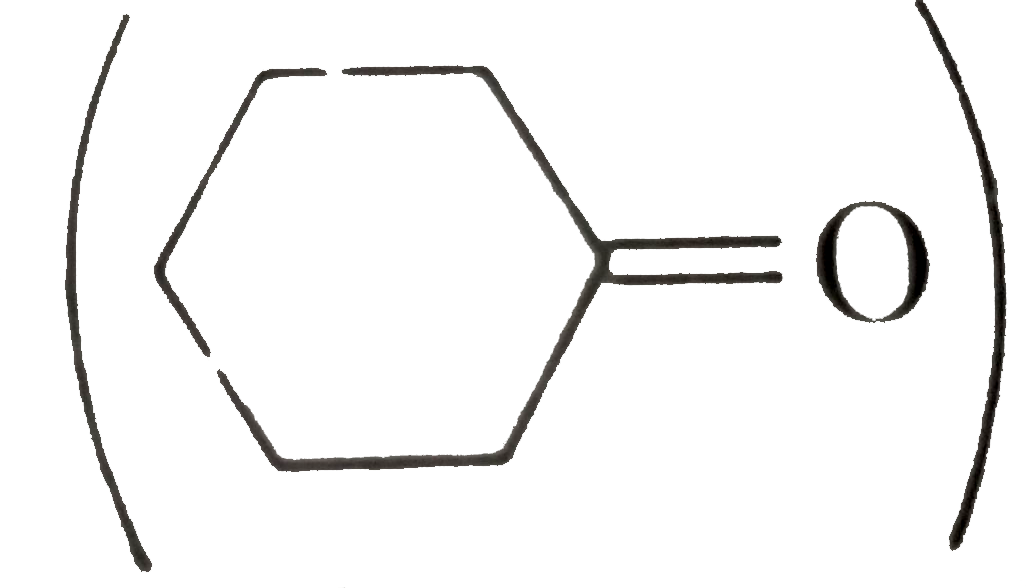 and 1 mol of `(PhCH=O)`, after standing for a few hours, the only procut formed is benzaldehyde semicarbazone.
and 1 mol of `(PhCH=O)`, after standing for a few hours, the only procut formed is benzaldehyde semicarbazone.
c. In the conversion of

by using Grignard reagent of
(I), why `(C=O)` group is protected?13:51View Solution1. Complete the following reactions:
a.
b.
c.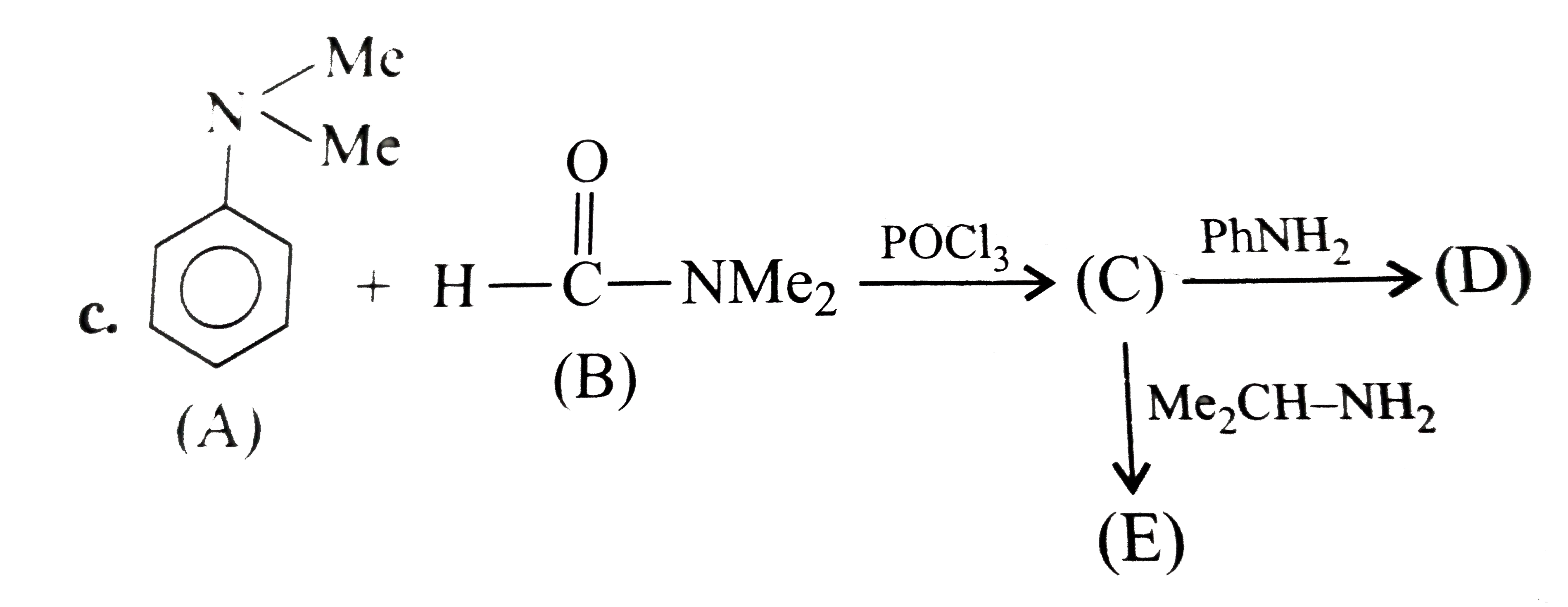
2. Which is more feasible equilibrium reaction for the formation of product?
i. `MECHO + NaCN ("in" H_(2)O) hArr MeCH(CN)O^(Θ)`
ii. `MeCHO +HCN ("in" H_(2)O) hArr MeCH(CN)OH`12:20View Solution1. i. `2CH_(3)CH_(2)CHOoverset(Θ)overset(OH)rarr(A)oversetDeltararr(B)`
ii. `2PhCH_(2)CHOoverset(Θ)overset(OH)rarr(C)oversetDeltararr(d)`
iii.
iv.
2. i.
ii. A hydrocarbon (A) of the formula `C_(7)H_(12)` on ozonolysis gives a compound (B) which undergoes aldol condensation giving `1-`acetyI cyclopentene. Identify (A) and (B).
3. Acetone and butan`-2`-one undergo both self and across aldol (ketol) condensations to gove aldol (ketol) which loses water to give `alpha,beta-` unsaturated ketones. The number of isomeric `alpha,beta-` unsaturated ketones formed is:
i. Three
iii. Four
ii. Five
iv. Six
4. Give the cyclic intramolecular aldol condensation of the following reactions:
a. Hexane`-2,5-`dione `underset((ii) Delta)overset((i)overset(Θ)(O)H)rarr`
b. Octane`-2,8-`dione `underset((ii) Delta)overset((i)overset(Θ)(O)H)rarr`
c. Nonane`-2,8-`dione `underset((ii) Delta)overset((i)overset(Θ)(O)H)rarr`
d. Pentane`-2,4-`dione `underset((ii) Delta)overset((i)overset(Θ)(O)H)rarr`
5. Identify the reactants that can be and that cannot be synthesised from the compounds given below.
i. `PhCH=CHCOCH=CHPh`
ii. `PhCH=CHCH_(2)COMe`
iii. `PhCH=CHCH_(2)CH_(2)COMe`
iv. `PhCOCH=CH_(2)`
v. `PhCH=CHCH=CHCOMe`
vi. `3-` Ethyl `-2-` methyl cyclohex `-2-`en-one
vii. `2-` Methyl cyclohex `-1-`ene-carboxaldehyde
viii.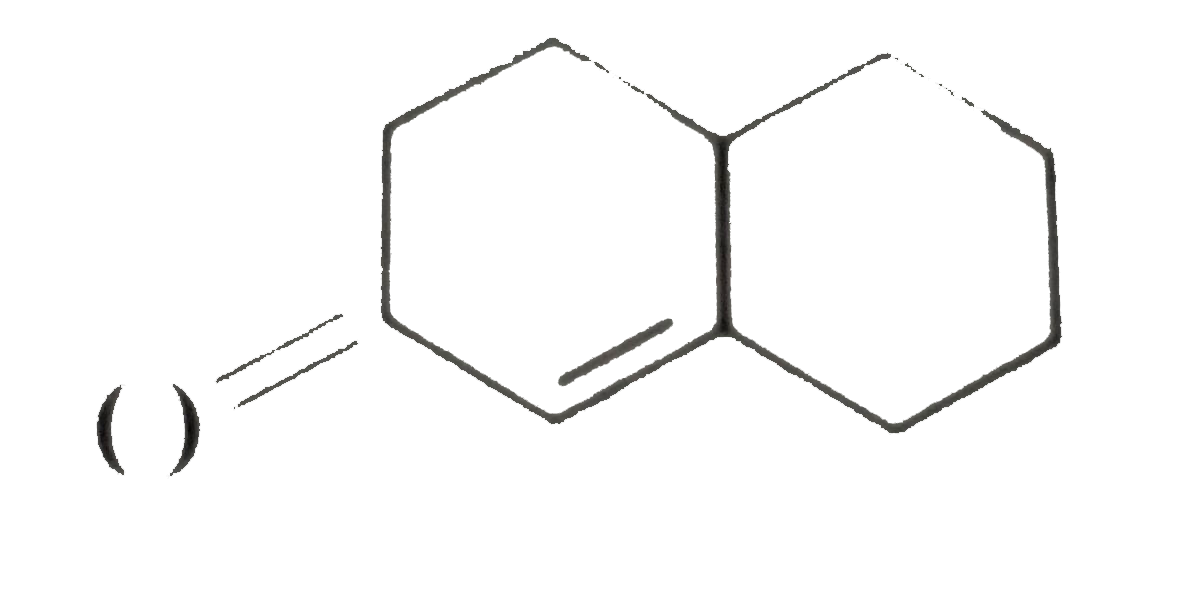
ix. `1-` Hydroxy`-4-`methyl bicyclo [2.2.2] octan`-3-`one
6. Give the mixed aldol product from the reaction of crotonaldehyde `(CH_(3)CH=CH-CH=O)` with `CH_(3)CHO`View SolutionComplete the following reactions:
a. `PhCHO+CH_(3)NO_(2)overset(overset(Θ)(O)H)underset(Delta)rarr (A)`
b. `Me_(2)CO+CHCI_(3)overset(overset(Θ)(O)H)rarr (B)`
c. `PhCHO+CH_(3)C-=Noverset(Noverset(Θ)(H_(2)))rarr(C)`
d. `Me_(2)CO+` ,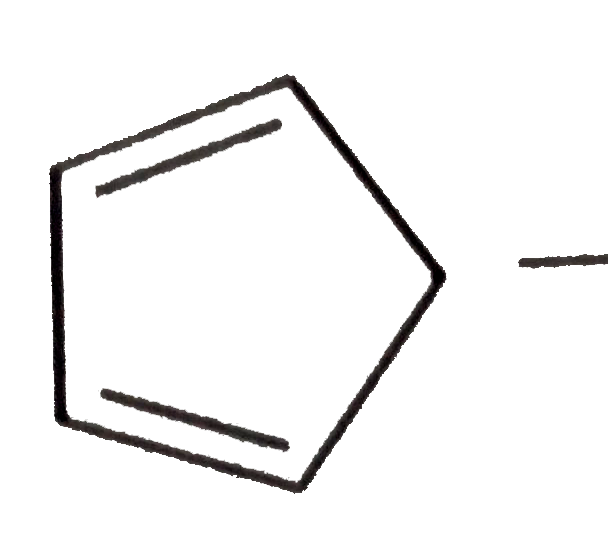 , `overset(overset(Θ)(OH))underset(Delta)rarr (D)`
, `overset(overset(Θ)(OH))underset(Delta)rarr (D)`
e. `PhCHO+` ,
f.
g. `PhCHO+` , 11:40View Solution
11:40View SolutionComplete the following reactions:
a.
b.
c.
d. 16:44View Solution
16:44View SolutionCompete the following reactions:
a.
b.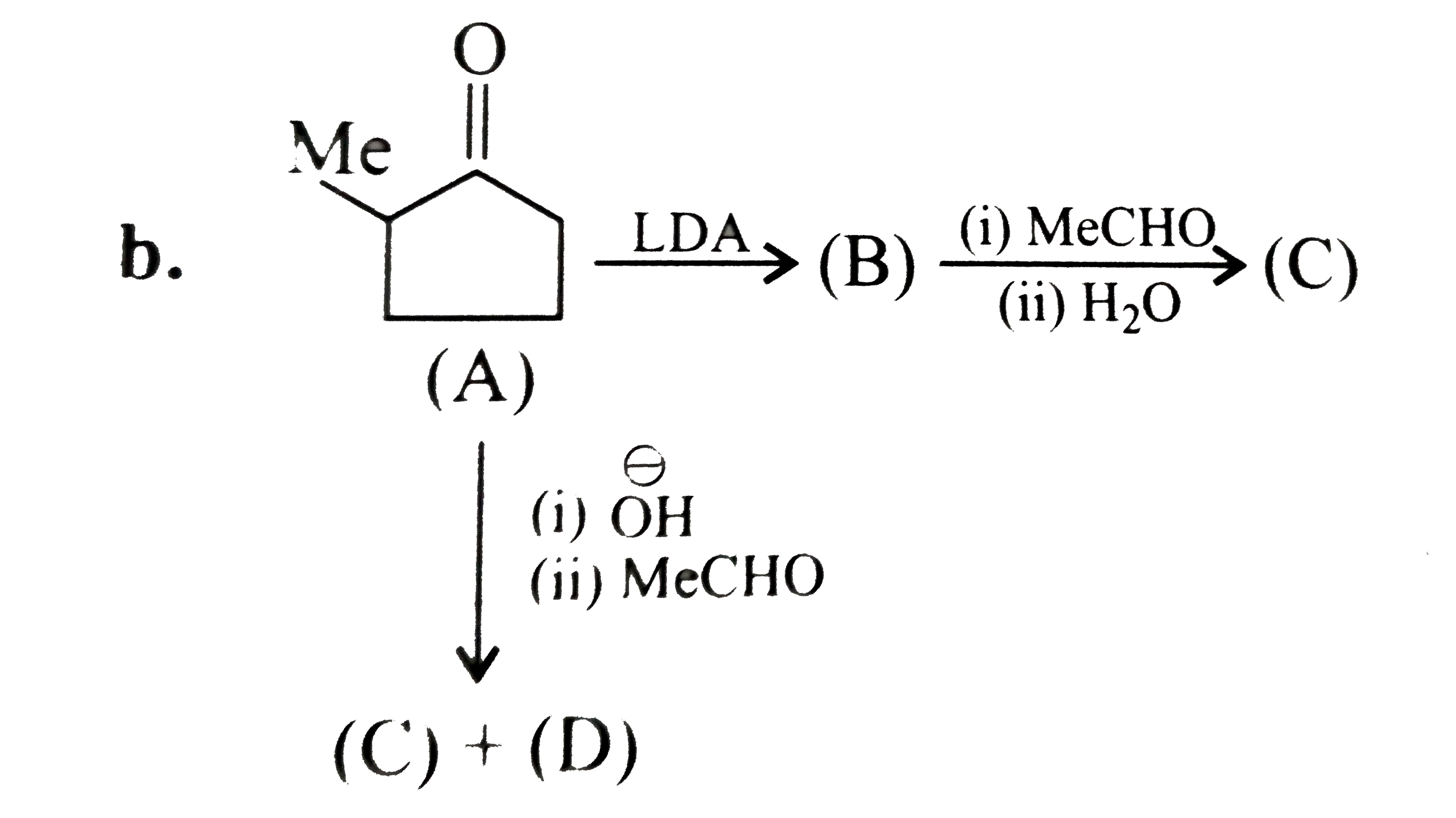
c.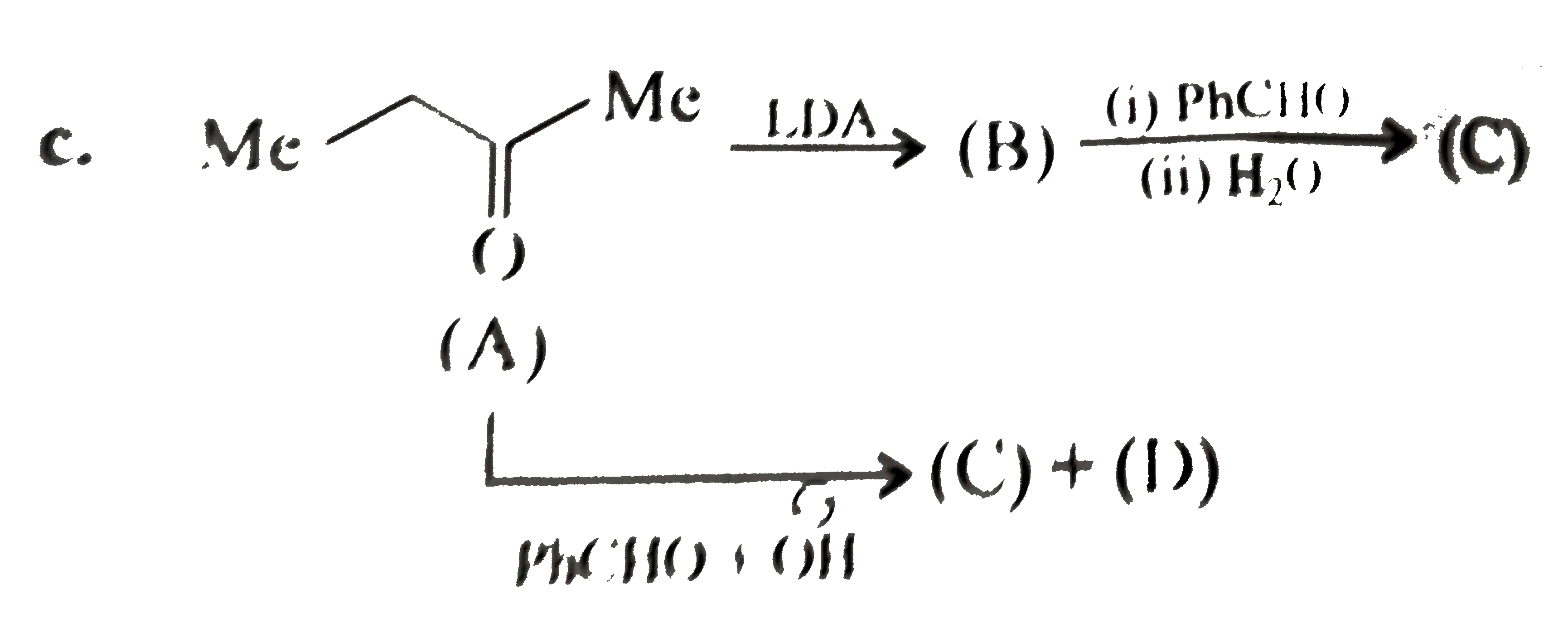
d.
e.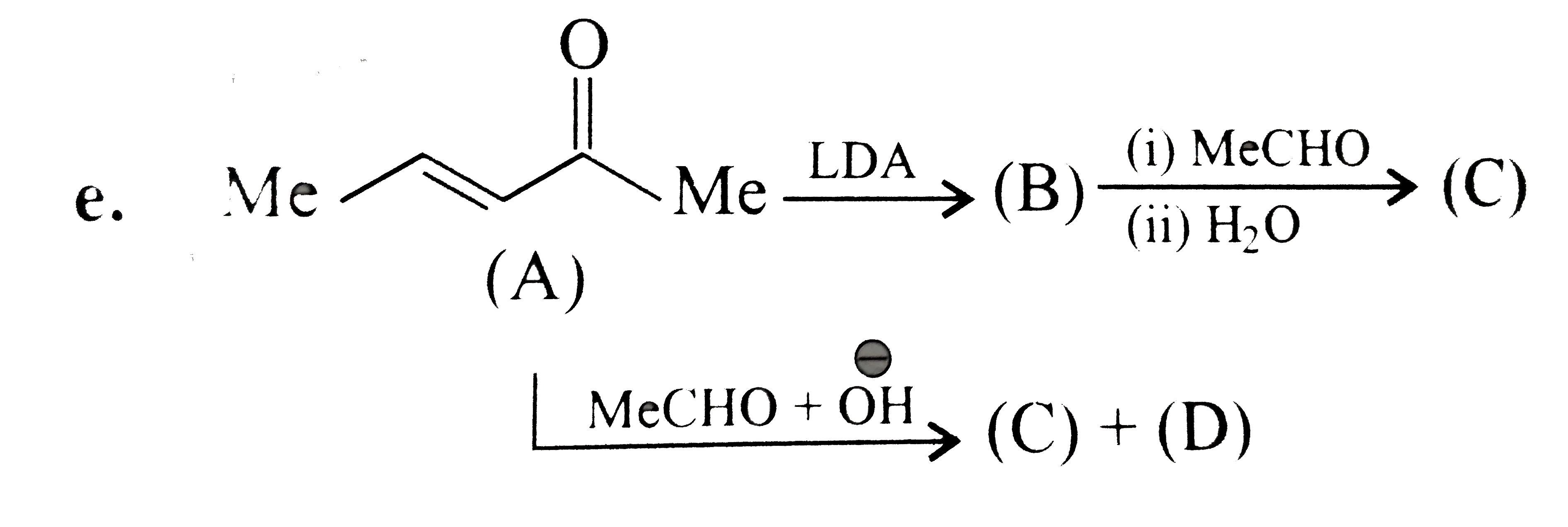 View Solution
View SolutionComplete the missing reactant in the following directed aldol synthesis.
a.
b.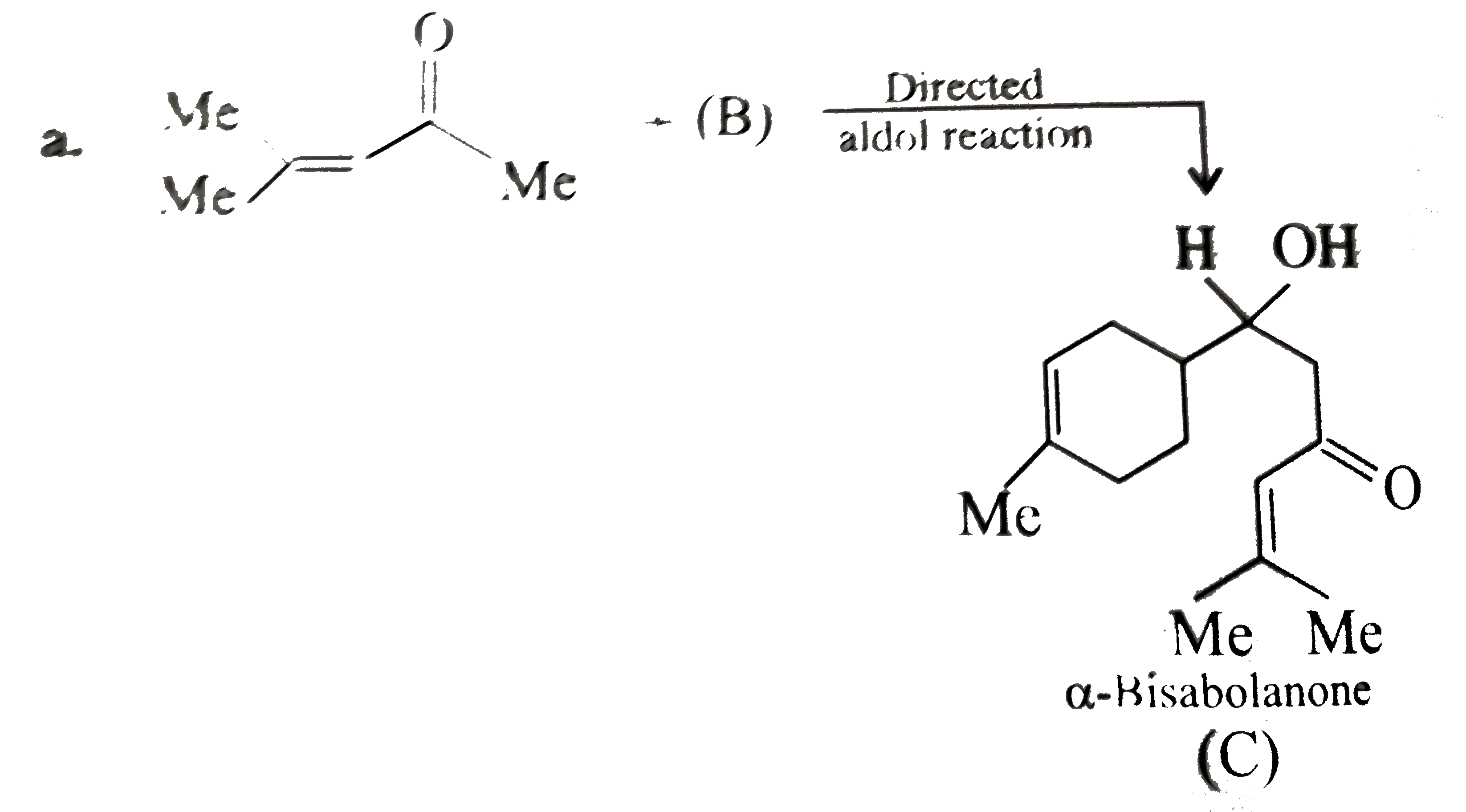 View Solution
View SolutionExplain:
a. P-Aminobenzaldehyde (I) does not show nucleophilic addition reaction.
b. Which is more acidic and why: (I) cyclohexanone or (II) 2-methyl cyclohexan-1,3-dione ?
c. When acrolein `(CH_(2)=CH-CHO)` reacts with hydrazine `(overset(..)(N)H_(2)overset(..)(N)H_(2))`, dihydropyrazole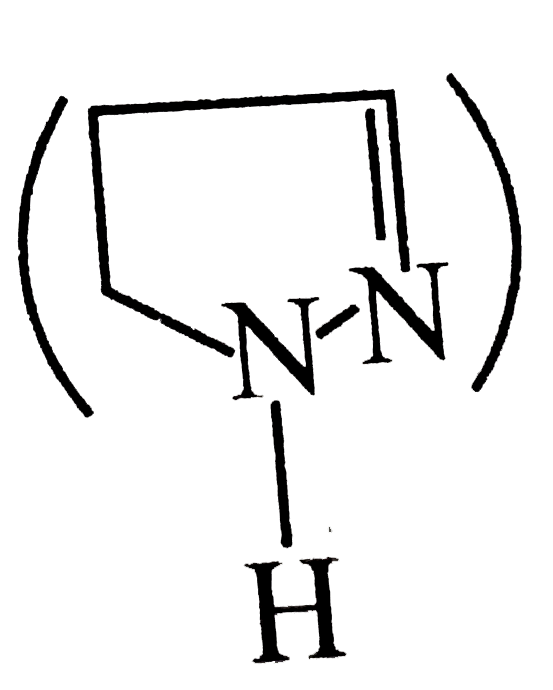 is formed. Give the mechanism of the reaction.08:44View Solution
is formed. Give the mechanism of the reaction.08:44View SolutionComplete the following reactions:
a. `overset((A))"Glyoxal" overset(1. NaOH)underset(2.H_(3)O^(o+))rarr (B)`
b. `underset((A))"Glyoxalic acid" overset(1.NaOH//Delta)underset(2.H_(3)O^(o+))rarr (B)+(C )`
c.
d. `CHO overset(HCO+overset(Θ)(OH))rarr (B) overset(HCHO+overset(Θ)(OH))rarr (C )+(D)`
`CHO overset(HCO+overset(Θ)(OH))rarr (B) overset(HCHO+overset(Θ)(OH))rarr (C )+(D)`
e.
f. 15:51View Solution
15:51View SolutionI. Which of the following alkanes can be synthesised by self aldol condensation of the aldehydes ? Show their synthesis.
a. b.
b. 
c. d.
d. 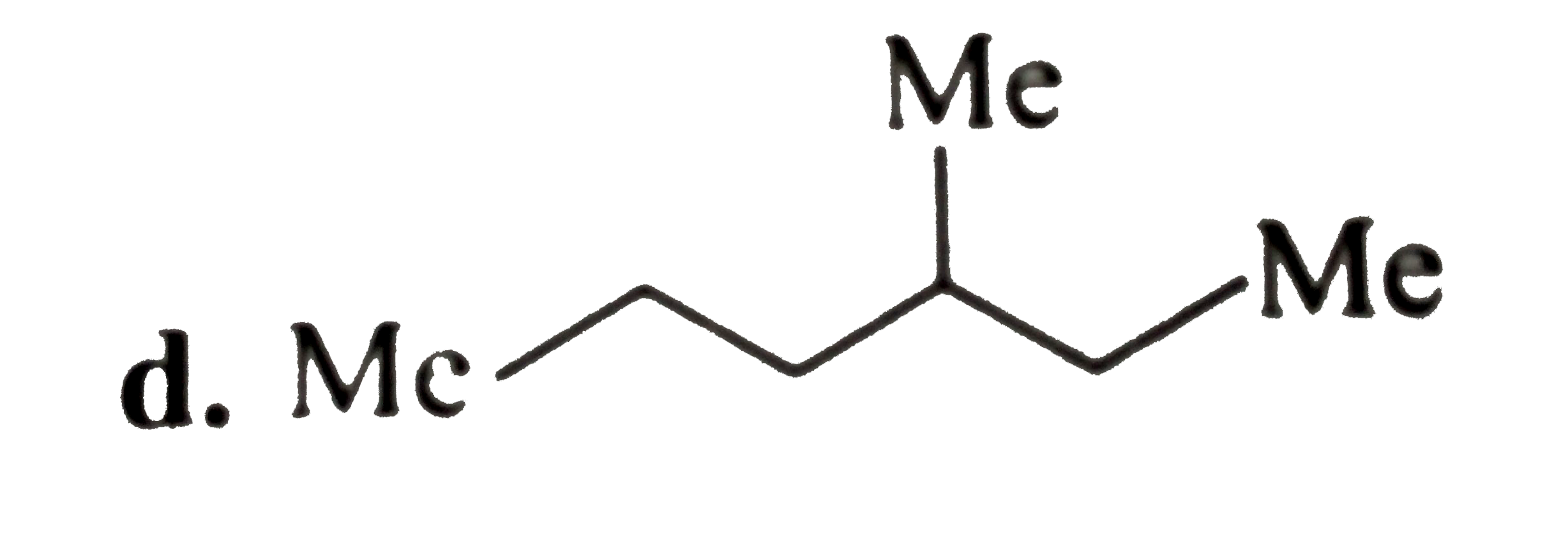
II. Complete the following reactions:
a.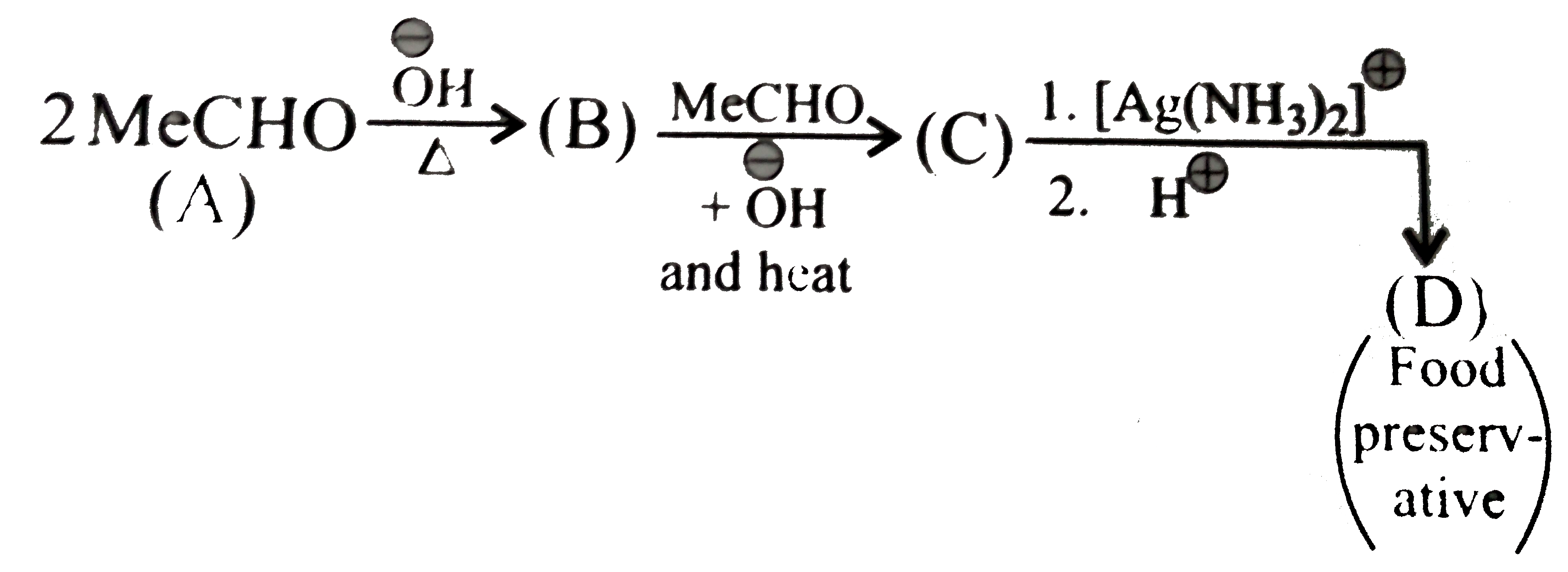
b. 27:03View Solution
27:03View SolutionIdentify the products:
a.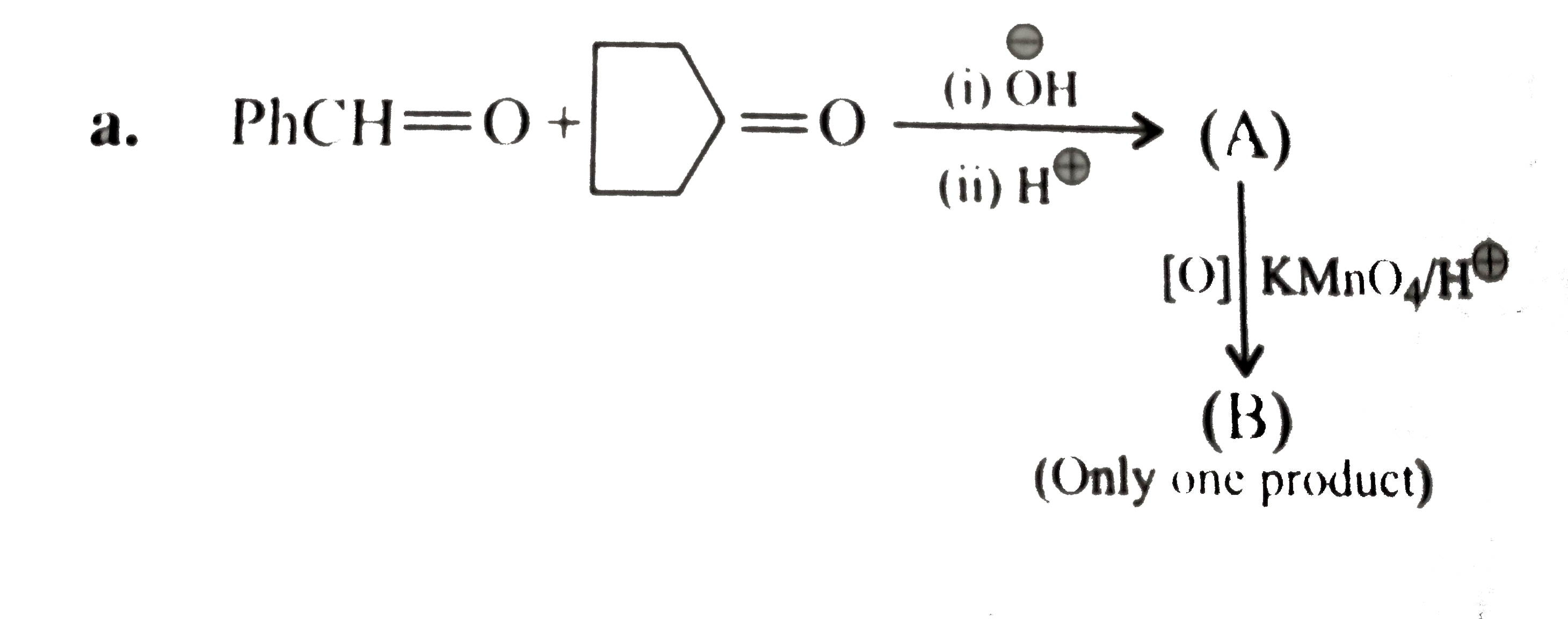
b.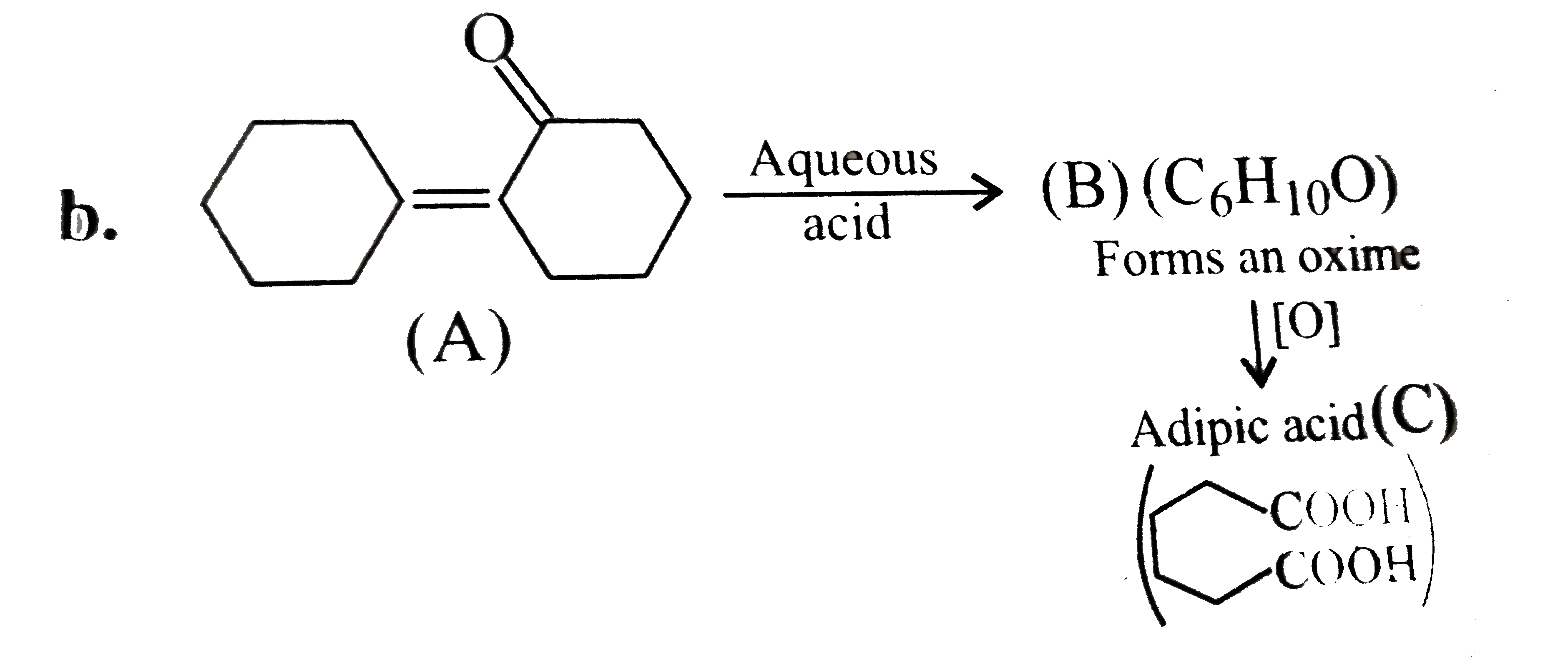
c. 21:18View Solution
21:18View Solutiona. Why do nucleophiles `(Nu^(overset(..)Θ))` add to the `(C=C)` of `alpha-beta`-unsaturated carbonyl compounds but not to alkenes ?
b. Explain the formation of product in the following reaction:
`CH_(3)CHunderset((A))= CHCHO overset(overset(Θ)(OD)//D_(2)O)rarr underset((B))underset(("Tetradecuterated compound"))(CD_(3)CH=CD.CHO)`
c. In the following reaction, three isomers are present in the equilibrium. Which is the most stable ?
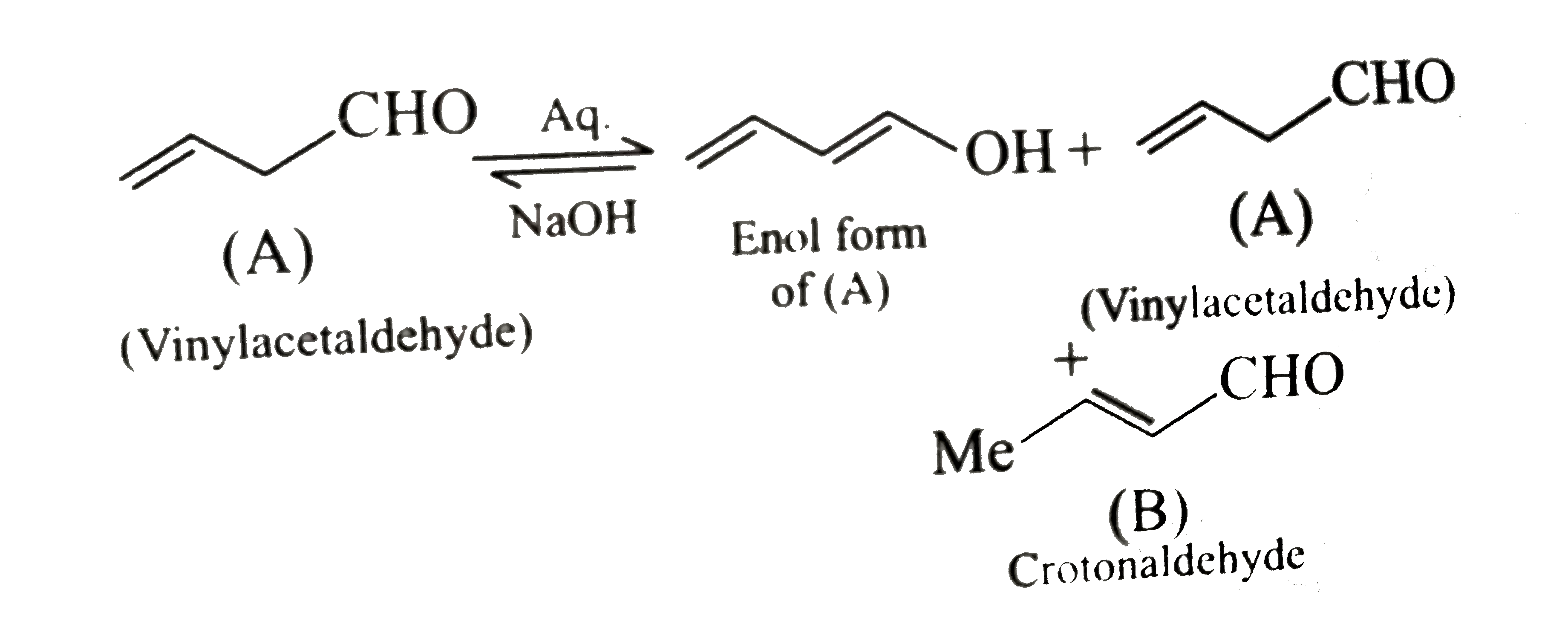
d. Explain why Michael addition is 3,4-addition.View SolutionComplete the following reactions:
a.
b.
c.
d.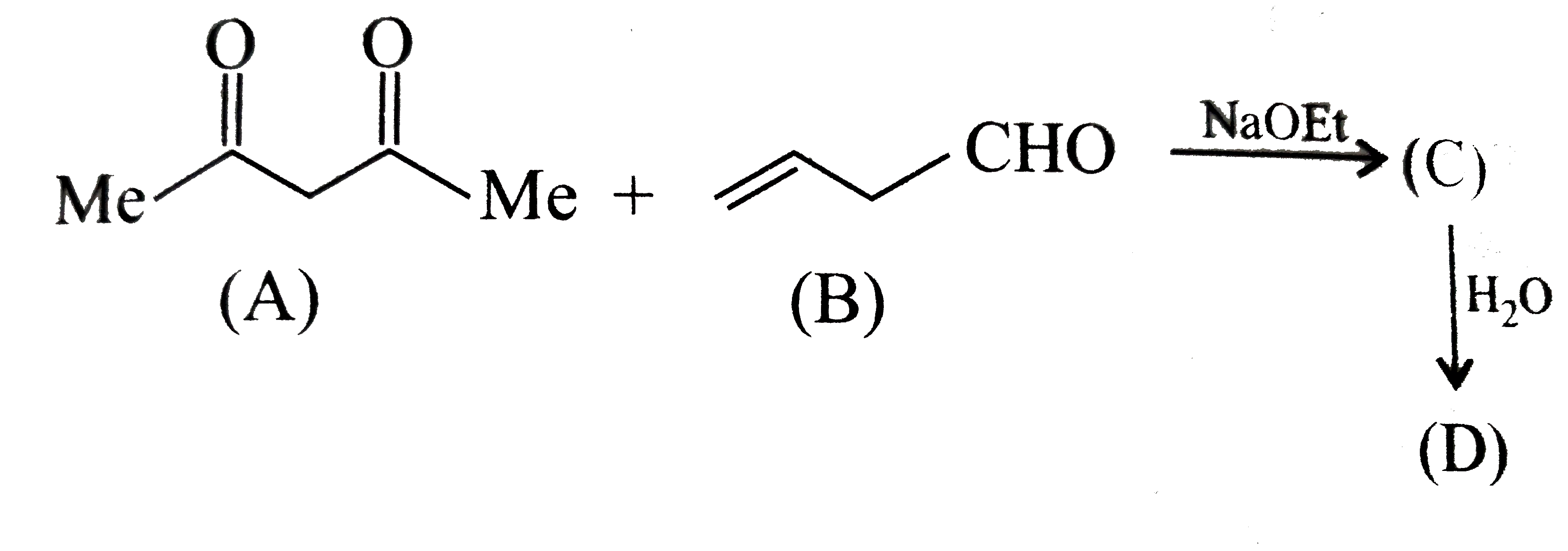
e.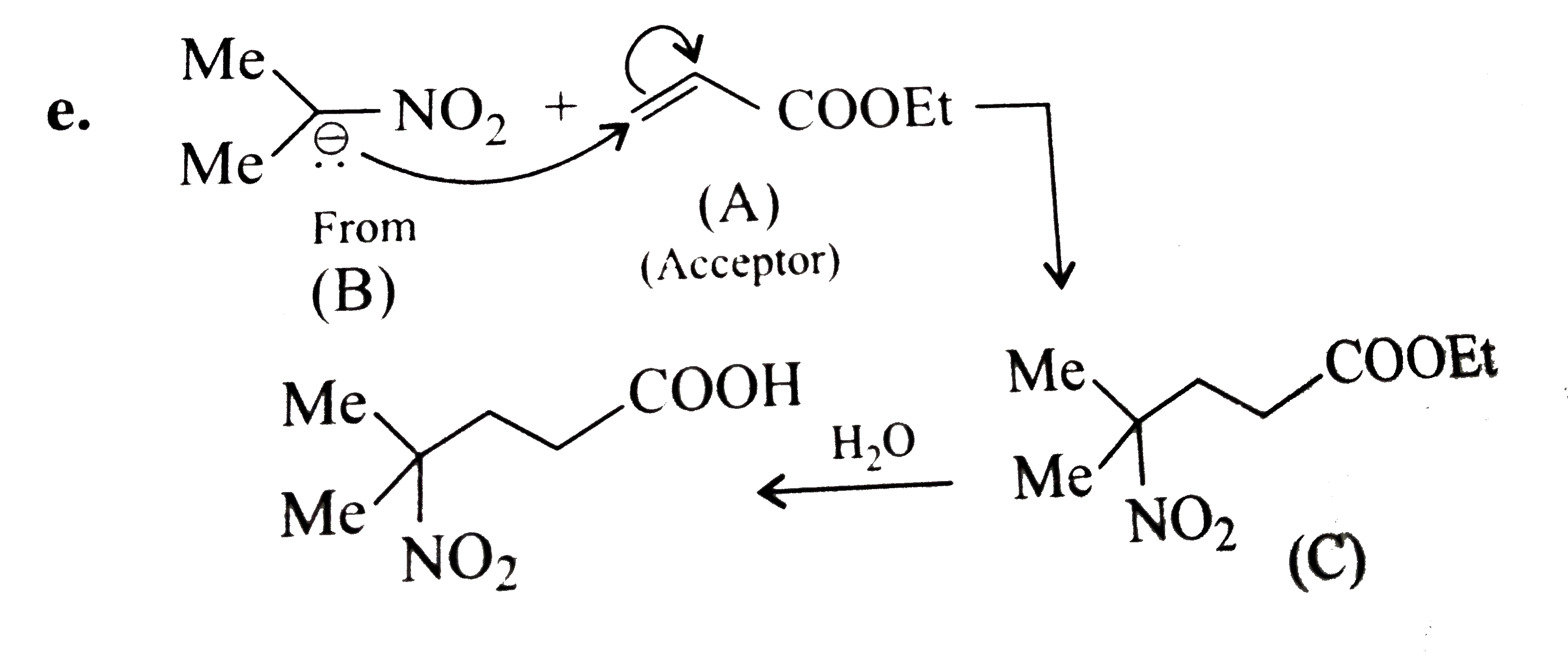
f.
g. View Solution
View Solutiona. Identify (A) to (E ) and name the stereoisemer of (B).

b. Complete the following reaction:
i.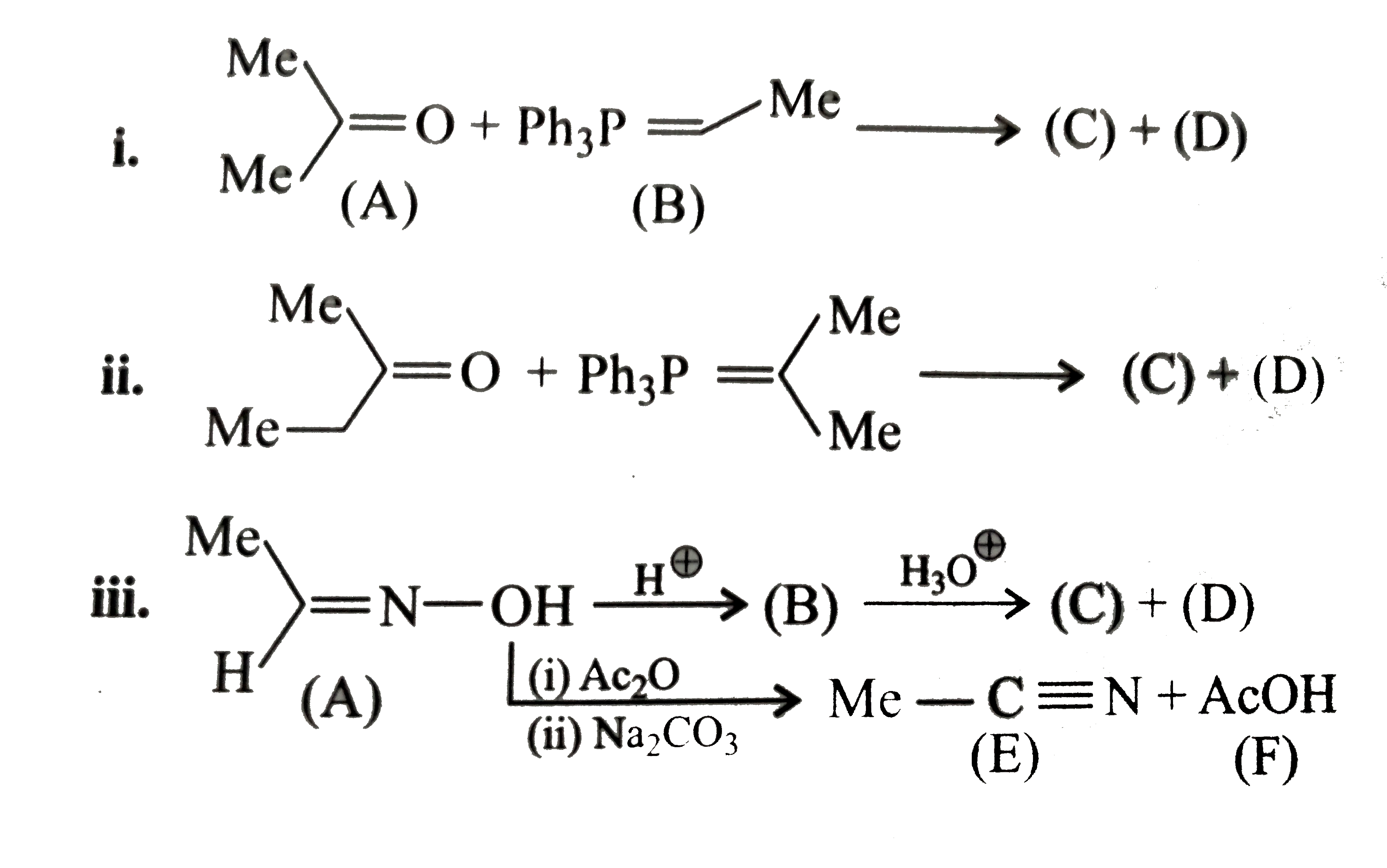
ii.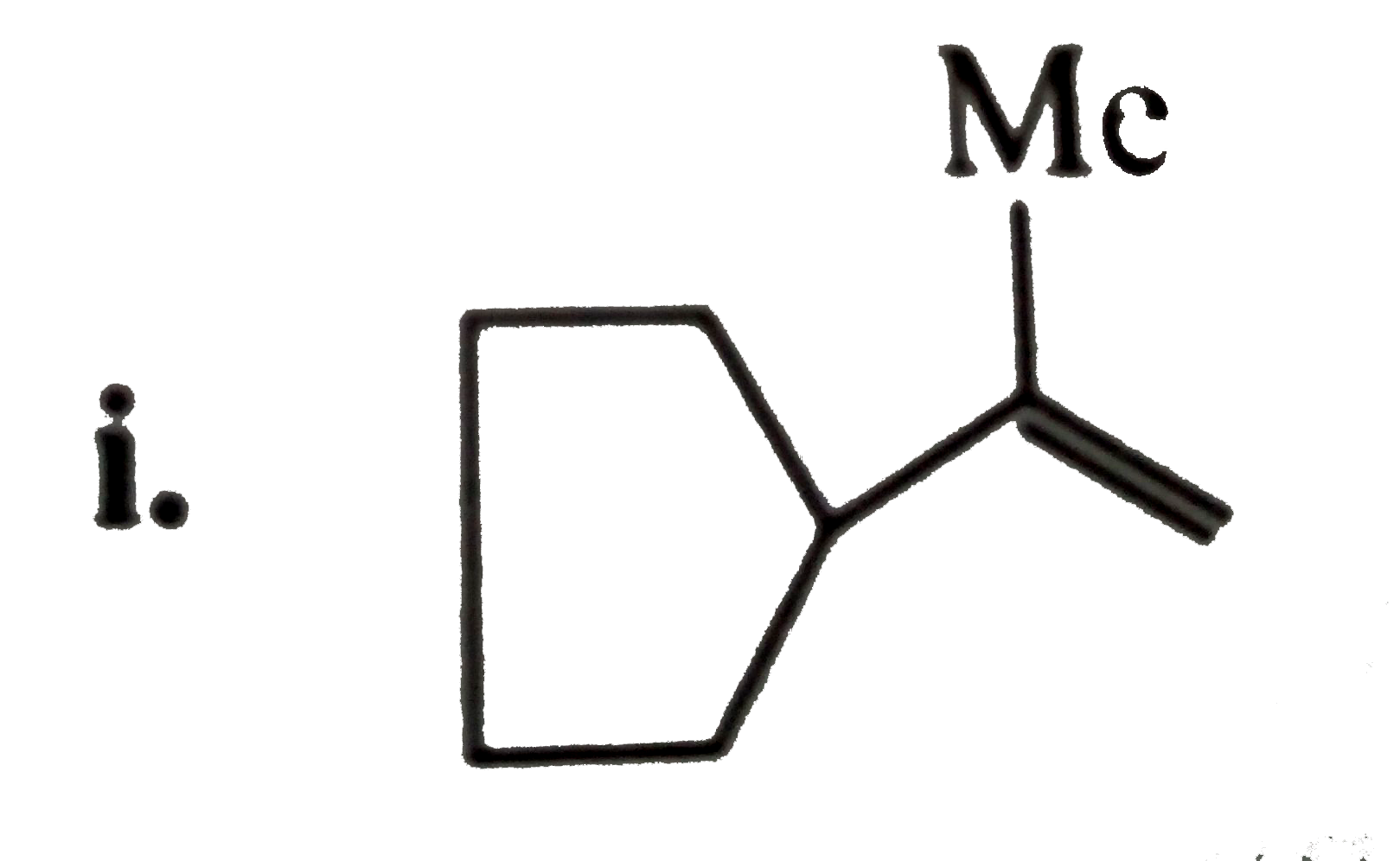
iii.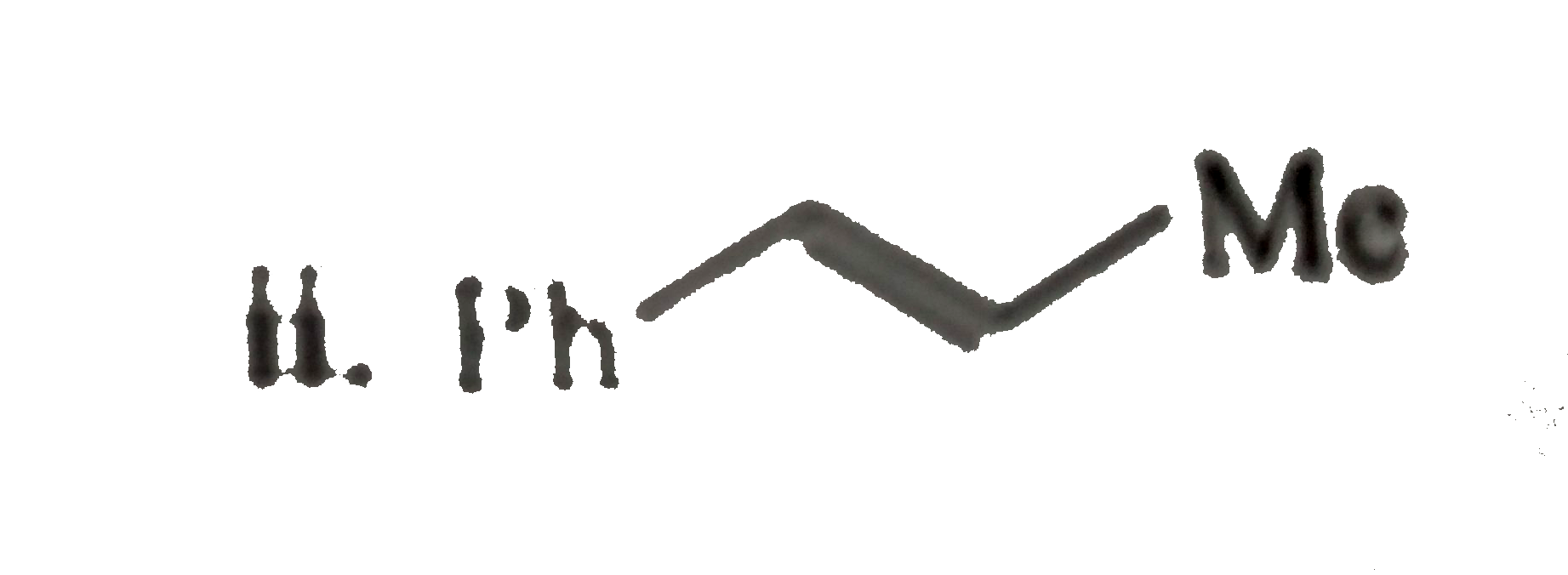
c. Give the structure of phosphonium halide, alkyl halide, and carbonyl compound used in the synthesis of following compounds by Witting reaction.
i. ii.
ii.  ltbgt d. Complete the following reactions: `View Solution
ltbgt d. Complete the following reactions: `View Solution
Illustration questions and complete solutions for chapter ALIPHATIC AND AROMATIC ALDEHYDES AND KETONES of CENGAGE CHEMISTRY (HINGLISH) of Class 12
All Exercises from CENGAGE CHEMISTRY Class 12 CHEMISTRY ALIPHATIC AND AROMATIC ALDEHYDES AND KETONES
- Archives Fill In Theblanks
- Archives Linked Comprehension
- Archives Multiple Correct
- Archives Objective
- Archives Subjective
- Archives True And False
- Exercises Assertion-Reasoning
- Exercises Concept Application
- Exercises Linked Comprehension
- Exercises Multiple Correct
- Exercises Single Correct
- Exercises Subjective
- Illustration
- Solved Examples
